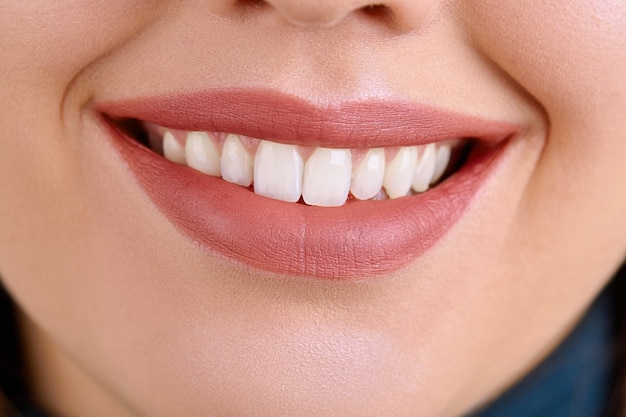It is normal to feel worried when you see unusual growths on your skin. Sometimes, these growths start small but become bigger. They may even cause discomfort. Many people look for answers by searching online. However, getting expert care is often the better choice. Scottsdale’s skin specialists use advanced methods to help patients with many skin concerns. Their methods are designed to soothe, treat, and heal skin problems.
In Scottsdale, one popular option is keloid treatment in scottsdale. Keloids are raised scars that can form after a wound heals. They often grow beyond the original mark and might itch or hurt. If you live in or near Scottsdale, you can find help from local professionals. They know how to handle keloids and other skin issues with modern tools and proper care. Specialists often suggest specific therapies and follow-up steps. These steps can support healthy healing and help prevent the growth from getting worse.
What Are Skin Tags?
Skin tags are small, fleshy growths that dangle from the skin. Many people get them on their necks, underarms, eyelids, or groin. These tags are not harmful. Yet, they can be annoying if they catch on clothes or jewelry. Sometimes, people feel self-conscious about them.
Skin tags grow because of friction or rubbing. When skin rubs against skin, these tiny growths may appear. They are more common in adults and can increase with age. Often, you can live with them without any health risk. Still, some folks want to remove them for cosmetic reasons. In such cases, a trained skin specialist can help.
Why Do People Develop Skin Tags?
- Genetics: If your family has a history of skin tags, you might get them too.
- Weight: Extra weight can create more skin folds, which raises friction. This friction can lead to more tags.
- Hormonal changes: Pregnant women may see more skin tags. Changes in hormones can trigger these growths.
- Medical conditions: Certain conditions, like diabetes, can make skin tags more likely.
It is smart to watch your skin for any new growths. If you see something unusual, you might want to talk to a specialist. They can check if it is harmless or if it needs attention.
Understanding Keloids
Keloids are scars that grow bigger than normal. They usually form after cuts, burns, or even minor wounds, like a pimple. These scars are thick and raised. They can appear pink, red, or dark brown. Keloids can also feel itchy or painful. Some people have a higher chance of getting them. Their skin reacts by growing more scar tissue than needed.
Unlike regular scars, keloids spread beyond the injured area. They do not vanish over time. In some cases, they keep growing for months or years. Because of this, keloids can affect a person’s confidence. Some people hide them under clothes or hair. Others feel uneasy about them.
Common Reasons Keloids Form
- Excess collagen: Collagen is a protein that helps wounds heal. Keloids have extra collagen, which makes them thick and raised.
- Skin tone: People with darker skin tones tend to get keloids more often.
- Injuries: Even small cuts, like a piercing or scratch, can lead to a keloid.
- Genetics: Keloids can run in families. If your parents get them, you might, too.
It helps to avoid unneeded skin injuries if you are prone to keloids. Try to keep your skin protected. For instance, you could wear special bandages on fresh wounds. That way, you reduce friction or rubbing.
Early Signs and Prevention
The best approach to skin growths is to watch for early signs. Early signs of skin tags might be small, flesh-colored bumps. They could start soft and grow slowly over time. In the case of keloids, you might see a scar becoming thicker and raised. This change often happens a few weeks after a wound forms.
Moreover, you can reduce your chances of getting these issues by keeping your skin clean. Try to manage any cuts or scrapes with gentle care. Use proper wound care steps, like cleaning and covering the wound. Also, stay hydrated. That helps your skin remain supple and heal faster.
Many people do not know there are proven ways to deal with these skin concerns. In fact, seeing a specialist can save time and worry. Specialists can check if the growth is safe or if it needs special treatment. If you act early, you avoid bigger or more painful procedures later on.
Spotting the Difference: Skin Tags vs. Other Growths
It can be confusing to tell the difference between skin tags and other growths. Some lumps could be warts. Others might be moles. Each growth has special traits:
- Skin tags: Tiny stalks, soft to the touch.
- Warts: Often rough on top, can spread by touch.
- Moles: Usually pigmented (brown or black). They can be flat or raised.
If you see a change in color, shape, or size, call your skin specialist. Sometimes, a harmless lump can grow in ways that need attention. Early checks help rule out bigger problems. Specialists use tools and tests to examine your skin. With their help, you can feel sure about any changes you see.
Common Treatment Approaches
Skin specialists in Scottsdale use different methods to remove skin tags or treat keloids. They pick the method based on the size, location, and nature of the growth.
- Cryotherapy: This method freezes growths using liquid nitrogen. When used on a skin tag, the tag falls off in a few days. Cryotherapy can also help control a keloid’s size.
- Surgical removal: A quick cut can remove skin tags or lessen keloids. Sometimes, doctors do this in an office with a local pain reliever.
- Injections: Doctors may use corticosteroid shots to flatten a keloid. This can lessen itch and pain.
- Laser therapy: Lasers target growths without harming nearby skin. Lasers may reduce a keloid’s appearance. They might also help with some types of skin tags.
Each treatment has benefits and possible risks. That is why an expert must examine your skin. They can suggest the safest and most effective plan for you.
Emotional Impact and Support
Skin growths can affect how you feel about yourself. Many people hide them with makeup or clothing. Some avoid social events because they feel embarrassed. Though these growths are common, people may still feel alone in their struggle.
However, there is hope. Support groups and online communities can help you feel seen. Hearing from others who share similar experiences can bring relief. Also, talking with a mental health counselor might help you handle low self-esteem. When you take steps to heal your mind, you may feel braver about treating your skin.
Why Scottsdale’s Experts Stand Out
Scottsdale is known for its sunny days and desert beauty. But it is also a hub for top skin care specialists. The doctors and nurses here have extra training. They learn about the latest tools, techniques, and products. This level of skill helps them serve many patients with unique skin worries.
In addition, Scottsdale clinics often feature pleasant environments. Patients feel calm when getting care. These offices also offer personalized treatment plans. Specialists focus on safety and results. They explain each step in plain language. That approach helps you feel more secure about what comes next.
Mid-Treatment Care and Follow-Up
After any procedure, your skin needs time to heal. Many specialists ask you to visit again for check-ups. They look for signs of infection or regrowth. If you had a skin tag removed, the doctor makes sure the site is healing well. If you had a keloid treated, they measure changes in size and shape.
At times, you must keep the treated area clean and covered for a short while. Specialists might suggest creams or ointments that protect the wound. Sometimes, they advise gentle massaging of the scar to limit tissue buildup. You may also get instructions on how to spot new tags or early keloid signs.
In the midst of your skin journey, you might find yourself concerned about other growths. You may want a different type of removal procedure, such as skin tag removal. These services help reduce unwanted growths. They also lower the chance of irritation in places prone to friction. Specialists handle removal with care. That way, you can return to daily life with minimal discomfort.
The Importance of Regular Check-Ups
It is easy to forget about skin checks. Life keeps us busy, so we postpone visits. Yet, regular exams can catch problems early. Early detection offers many benefits:
- Fast treatments: If you see a change, a quick response can prevent further growth.
- Less discomfort: Smaller growths are easier to remove. That means less pain.
- Cost savings: You often spend less on treatments when issues are found early.
Moreover, a specialist can spot any new lumps or spots that you might miss. You learn about preventive steps to keep your skin healthy. This is especially vital if you have a history of keloids.
Home Remedies: Pros and Cons
Some people try home remedies for skin tags or thick scars. Common home methods include tying off a skin tag with dental floss or applying topical ointments. Others might use diluted tea tree oil. While these might sometimes work for small growths, they are not always safe. Tying off can cause pain or infection if not done right.
For keloids, home remedies are seldom effective. Keloids develop from excess scar tissue. Applying oils or lotions will not always address the root cause. In some cases, it might only soothe the surface. However, the thick tissue beneath remains. If you try a home approach, watch closely for signs of infection or irritation. Seek help if you see redness, pus, or if the area becomes painful.
Potential Complications
Skin tags themselves are not harmful. Yet, they can tear if they catch on clothes. A torn skin tag may bleed or hurt. Keloids, on the other hand, can interfere with movement if they develop on joints. They can also be itchy and painful, which affects daily comfort.
Certain methods, like freezing or cutting, must be done right. If not, you risk infection or scarring. Worse, there is a chance of keloid formation if the skin is prone to overgrowth. This is why experts suggest seeing a professional for removal. A trained eye ensures the correct approach is used.
Practical Tips for Better Skin Health
- Stay hydrated: Drink enough water each day. It helps keep your skin flexible.
- Wear sunscreen: Strong sun can damage skin and slow healing. Use sunscreen to avoid sunburn.
- Keep wounds clean: If you get a cut, wash it gently. Cover it with a clean bandage to avoid infection.
- Check your skin: Look at your skin often. If you see something new or odd, talk to a specialist.
- Be gentle: Avoid scrubbing or picking at growths. Doing so can lead to bigger issues.
Building a Healthy Lifestyle
A healthy diet makes a difference in skin health. Vitamins and minerals, such as Vitamin C and zinc, help wounds heal well. Leafy greens, citrus fruits, and lean proteins are good choices. Also, regular exercise boosts blood flow. That helps with healing, too.
Stress can slow skin repair. High stress means your body produces more cortisol. This hormone can cause swelling or make skin problems worse. Activities like yoga, walking, or reading can calm your mind. Then your body can focus on healing and renewal.
Many people in Scottsdale enjoy outdoor fun. Yet, desert weather can be harsh. Dry air pulls moisture from your skin. To keep your skin happy, use a moisturizer. Also, cover up with hats or clothing if you plan to be outside for a long time.
Frequently Asked Questions
Q: Are skin tags contagious?
No. Skin tags do not spread from person to person. They are harmless growths caused by friction or genetics.
Q: Do keloids ever go away?
Keloids do not usually go away on their own. Some might shrink over time, but many remain unless treated by a professional.
Q: Can I remove a skin tag at home with no risk?
There is always some risk. Cutting or tying off a tag might cause infection or scarring. It is better to see a specialist for safe removal.
Q: Will insurance cover these treatments?
It depends on your plan. Some cover removal if it is medically necessary. Others see it as cosmetic. Check with your insurance for details.
Seeking Professional Advice
It is wise to ask a licensed dermatologist or skin specialist for help. They look at your health history, skin type, and personal goals. Then, they pick the best procedure. They also guide you through aftercare. You learn how to protect your skin from further damage.
Many clinics in Scottsdale accept appointments online or by phone. They might also give free consultations. During these visits, you can ask questions and share concerns. Then, you can decide on a plan that feels right for you.
Final Thoughts on Scottsdale’s Leading Skin Specialists
Scottsdale offers excellent care for people dealing with common skin problems like tags and keloids. Modern clinics focus on personalized solutions and long-term support. That allows you to get the care you need without guesswork. Once you get treated, you can enjoy healthy-looking skin. You also gain confidence and peace of mind.
Taking action early is key. Keep an eye on changes. Look for signs of growth. Ask for help when you are unsure. By staying aware, you make better decisions for your skin. It is never too late to find relief and a fresh start.
Key Takeaways
- Early detection and expert care can help prevent bigger issues.
- Scottsdale specialists have the right tools and knowledge to handle skin concerns.
- Living a healthy lifestyle and staying hydrated support better skin healing.
Thank you for reading. This journey from skin tags to keloids is not the end. If you ever need more details or want to explore new treatments, there are many options in Scottsdale. Skilled professionals are here to help you care for your skin with kindness and skill.
Visit thataiblog for more informative blogs.




